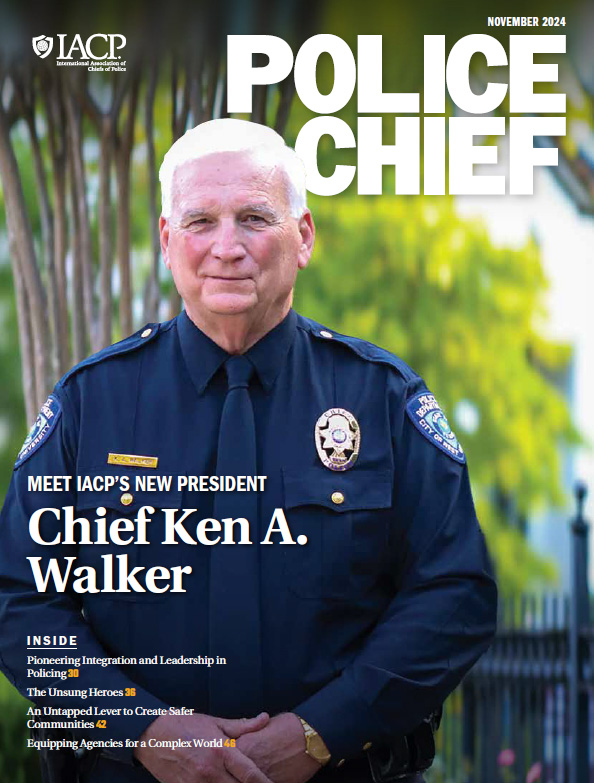As law enforcement leaders, we understand that there are many benefits to a strong and trusting partnership between law enforcement agencies and the communities they serve. Some of the many benefits are reducing crime, enhancing community safety, and building legitimacy.
In order for law enforcement to be truly effective, police agencies cannot operate alone; they must have the active support and assistance of all segments of the community, schools, faith-based organizations, civic groups, and others. Support can only be achieved if law enforcement is actively engaged with its community in a trusting, open, and transparent manner. This proactive engagement is particularly important with those facets of the community that tend to trust the police the least.
In the context of increased community safety and a reduction in crime, if a law enforcement agency does not have a relationship with its community, citizens won’t trust the police and will be far less likely to provide information and support the police in anti-crime measures and initiatives.
As law enforcement officials, one of our main goals is to prevent crime before it even happens. This effort includes trying to identify individuals who require intervention—individuals who are disenfranchised, have become withdrawn, begin to exhibit paranoia, or are disgruntled because of some perceived grievance.
Our goal is not to collect information or to stereotype, but to build strong and trusting relationships so we can identify individuals who are in crisis and connect those individuals with the resources and support they require.
While there may be no reliable indicator that identifies when an individual has the propensity to plan a violent act, sometimes there are signals that those closest to the individual may be able to identify. As law enforcement leaders, we do not believe that just because a person has a diagnosed mental illness, they are more likely to commit a violent act such as a mass shooting. The inclination to commit a violent act can manifest in many forms and does not necessarily have a link to mental illness. Because of this, family members, friends, classmates, coworkers, fellow students, and community members are often the best situated to recognize any sort of behavioral risk indicators, and law enforcement needs to be able to rely on community awareness.
If a person is exhibiting signs that he or she may commit a violent act, his or her family, friends, or peers should not be afraid to contact the police because they don’t know how we are going to respond. If law enforcement agencies are transparent, open, and honest, and they work hard to build lasting relationships with their communities, individuals will feel safer reaching out to the police, and, in return, law enforcement will be better positioned to protect residents.
Our greatest long-term protection against violence, mass shootings, or any other attack is a strong community-police relationship centered on trust. Establishing and maintaining safe communities requires an ongoing, concerted effort, but we need to ensure that all facets of a community feel respected.
In order to provide support to law enforcement agencies looking to enhance community trust by focusing on culture, policies, and practices, the IACP, with support from the Motorola Solutions Foundation, and the Office of Community Oriented Policing Services, U.S. Department of Justice, established the IACP Institute for Community-Police Relations.
The Institute will provide immediate, short-term, and long-range support to state and local law enforcement agencies in the United States as they seek to address the issues raised in the Final Report of the President’s Task Force on 21st Century Policing. These issues include building trust and legitimacy, policy and oversight, technology and social media, community policing and crime reduction, training and education, and officer safety and wellness. The report from IACP’s 2015 Summit on Community-Police Relations will also serve as a foundational tool for the Institute’s efforts.
Current and planned offerings of the Institute include
- educational materials, including tools, reports, articles, and other resources to help agencies build and foster positive community-police relations
- translation of Task Force recommendations into a blueprint for agencies to follow in embarking on recommendation implementation
- training and technical assistance to support Task Force recommendation implementation
- pilots of innovative approaches to build community-police trust
- facilitation of citizen-police dialogue to increase trust
- inter-agency mentoring to increase local use of the Task Force report
Sustained engagement and collaborative approaches with our communities are imperative to maintaining community safety and preventing acts of violence. It is my hope that the IACP Institute for Community-Police Relations will assist agencies in navigating these conversations and advancing a culture of cohesion and trust between the police and the communities they serve.
For more information about the IACP Institute for Community-Police Relations, visit www.theiacp.org/ICPR. ♦
Please cite as
Terrence M. Cunningham, “Community Engagement: A Key Element in Community Safety,” President’s Message, The Police Chief 83 (June 2016): 6.


